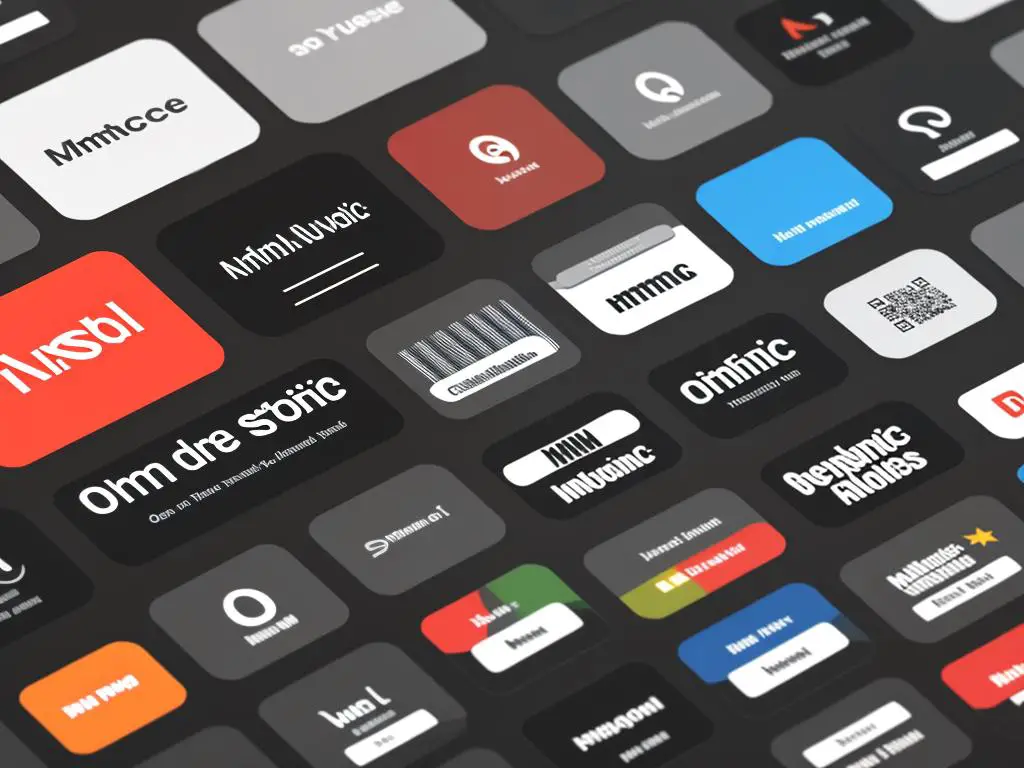As we navigate through the digital age, the way we access and consume music has fundamentally shifted, transforming the very nature of the music industry. Online music stores have emerged as significant players in this new landscape, providing an easily accessible platform for music enthusiasts to explore and purchase their favorite tunes. Moreover, these platforms often offer curated recommendations, exclusive releases, and personalized playlists to enhance the user experience. Just as online thrift shopping tips can help individuals snag rare and valuable finds at a bargain, savvy music lovers can also discover hidden gems by exploring lesser-known artists or limited-time discounts. As a result, this digital transformation has empowered both listeners and creators, democratizing the music industry like never before.
This easy-to-understand guide will take you through the functioning of these online music stores, introduce you to some of the popular ones available in the marketplace, and explain the complexities of digital rights and licensing in music. We will also foresee the future trends that might shape our consumption patterns of digital music in the coming times.
How Online Music Stores Work
Operating Mechanism of Online Music Stores
Online music stores essentially function as platforms where artists, producers, and record labels can distribute their music to the public. The store’s digital infrastructure allows visitors to easily browse through an extensive collection of music from around the world and from different periods.
Search parameters such as genre, artist, album, or song title can be entered to find specific tracks or albums. Additional features might include curated playlists, personalized music recommendations, and radio-style streaming services, based on users’ previously listened to music or search patterns.
Exploring Online Music Stores: A Guide to Music Selection and Purchase Methods
When you’re navigating online music stores, you’re typically presented with two buying options after choosing the music you love: digital downloads or streaming services. With digital downloads, you’ll directly purchase the music file and can then keep it forever, transferring it to other devices if you wish.
On the other hand, streaming services require monthly or annual subscription fees for access to a vast collection of music that you can stream ‘on-demand’ without having to download. For times when you’re offline, most platforms also allow temporary downloading of tracks.
After setting up your account with an online store, you can usually pay via credit cards, debit cards, or digital wallet solutions.

3 Popular Online Music Stores
A Closer Look at Amazon Music
When considering online music stores, Amazon Music often comes to mind due to its popularity and broad collection of music from a variety of genres. The platform offers both a free, ad-supported tier solely for Echo device owners and Amazon Prime Music, which is included with a Prime membership at no extra charge.
If you’re a Prime user, you’ll have access to over 2 million songs and the ability to listen offline with unlimited song skips. Taking it a step further, they propose Amazon Music Unlimited – a premium package with access to about 70 million songs for those willing to subscribe.
Apple Music & iTunes
Apple Music and iTunes Store are another pair of well-established online music stores attracting large consumer review. iTunes Store, an integrated function of Apple’s iTunes software, allows users to browse and purchase music, videos, and other multimedia content.
Apple Music, on the other hand, is a streaming service that requires a subscription but provides unlimited access to a vast music library, live radio stations, and social features that allow following of favorite artists. Apple services are known for their slick user interface and excellent customer service, which includes seamless integration with other Apple devices.
Introduction to Spotify
Renowned as a major player in the music streaming industry, Spotify boasts a comprehensive collection of music tracks and podcasts. You have a choice to either opt for a cost-free, commercially-backed service or the subscription-based Spotify Premium, which offers perks like zero ads, the ability to play music offline, along with unrestricted track skipping.
Spotify’s user experience is highly rated mainly because of its unique algorithm-based personalized playlists such as “Discover Weekly” and “Daily Mix”, designed to introduce listeners to fresh music tailored to their listening patterns. The fact that Spotify’s online store is widely accessible across numerous devices and platforms globally only adds to its popularity and usability.

Navigating Digital Rights and Licensing of Music
Interpreting Digital Rights in Online Music Stores
Before you delve into acquiring music from online stores, it is important to familiarize yourself with the concept of Digital Rights Management (DRM). DRM comprises technologies and services utilized by content creators and vendors to manage the usage of purchased digital media and equipment.
This is so as to mitigate copyright infringement, unapproved replication, or unwanted derivative products. For instance, if you buy a song from an online music shop, DRM technologies make it almost impossible to distribute that song or play it on unauthorized devices.
Grasping the meaning of DRM policies is vital for users as it affects how you utilize and disseminate the music purchased. Some music files may have encrypted restrictions preventing them from being played on select devices. A common misunderstanding amongst music purchasers is the belief that they own the music right after purchasing it in digital format or a physical CD.
Contrarily, in most circumstances, they are merely acquiring a license granting them the privilege to listen to the music within definite bounds, not the music itself. Such bounds can include constraints on duplicating the music, distributing it, or selling it, as outlined in the Terms of Service (ToS) provided by the online music store.
Understanding Music Licensing with Online Stores
Being aware of music licensing is pivotal in the music industry. It not only provides artists, record companies, and producers with authority over their music but also allows them to profit from it. When you procure music from an online store, what you are effectively doing is buying a license that allows you to listen to that particular music.
This license, however, carries with it certain limitations and stipulations. For example, perhaps you will be permitted to download the track for personal use onto a limited number of devices or create CDs. Grasping these restrictions can provide music consumers with a clear understanding, guiding them to make more informed purchases from online music stores.

Future Trends in Online Music Stores
Technological Advances and Evolving Consumer Habits in Online Music Stores
The panorama of online music stores is consistently evolving, stimulated primarily by rapid technological advancements and changing consumer behavior. The top online electronics stores even impact consumer choices with their options available for music distribution.
Machine learning and artificial intelligence are increasingly integrating into music platforms, identifying users’ music preferences and suggesting custom song recommendations, therefore enriching the user interface.
In addition, the promising capacities of virtual reality (VR) technology are being explored, fostering immersive and engaging music experiences that could revolutionize how consumers enjoy music online.
Upcoming Musical Platforms
The future of online music stores lies not only in selling music but in becoming holistic platforms for music and culture. There’s a growing trend of integrating social features into music stores, where users can share playlists, collaborate on music creation, or even attend virtual concerts, essentially turning online music stores into social media platforms.
Furthermore, the recent rise of non-fungible tokens (NFTs) offers a unique opportunity for online music stores. Artists can sell their music as NFTs, giving fans ownership over their music and providing a new revenue stream. This trend is likely to escalate, influencing online music stores to evolve further and open doors to a more interactive music landscape.

There seems to be no stopping in the growth and possibilities that online music stores offer. As they continue to offer a wider selection of music and personalized experiences, it inevitably puts them at the heart of the new music industry.
The fascinating web of digital rights, licensing and innovations such as emerging technologies will continue to shape this sphere. With exciting changes looming on the horizon, it is an incredible period for fans and artists alike, ushering in a new era where technology and music blend seamlessly. Stay tuned to stay abreast of the music industry’s digital evolution.



